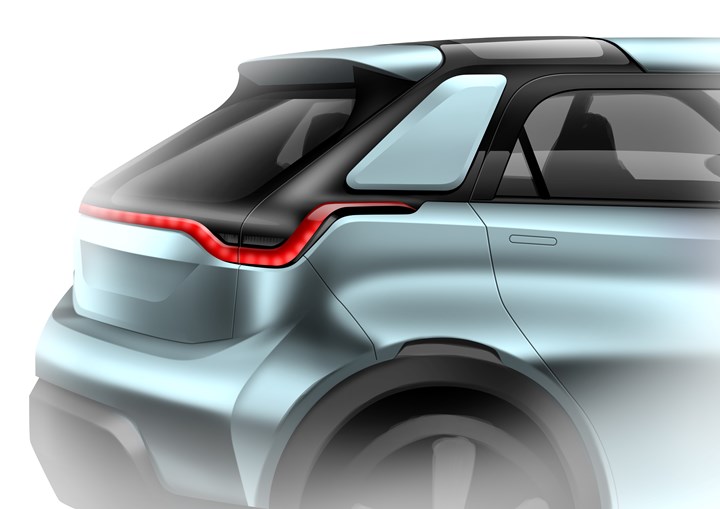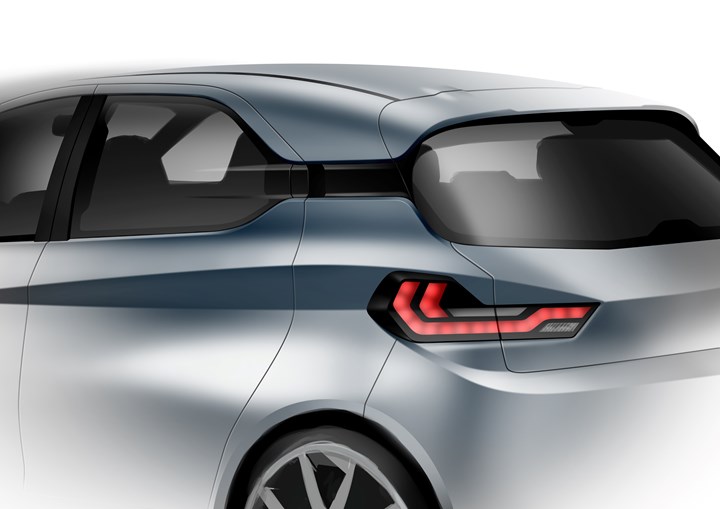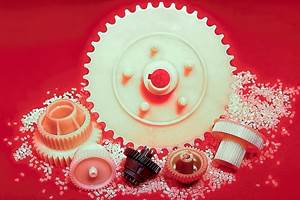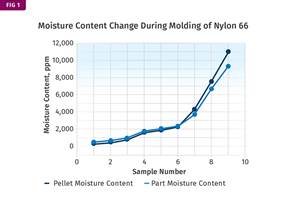PC Has Come a Long Way with a ‘Bright’ Future Ahead
SABIC’s recent study on automotive rear-quarter windows underscores Lexan PC’s merit for integration, styling and aerodynamics.
Back in January 2017, we reported on the largest ever rear-quarter window sporting SABIC’s Lexan PC, which appeared on the then new-generation Buick GL8 and GL8 Avenir luxury multi-purpose vehicles MPVs introduced by the then-20-year-old joint venture of GM and SAIC Motors in China (SGM). Molded from Lexan PC from SABIC, it was 40% lighter and significantly more impact resistant that a comparable glass window, and also featured design elements not achievable with glass. Most of us are familiar with the great strides made by PC and its alloys in a broad range of applications including computer housing, construction and, of course, automotive.

Going even further back to PT’s October 2005 issue—devoted to the magazine’s 50th anniversary, we reported that the modern era of engineering thermoplastics was launched in 1953 when Dr. Daniel W. Fox of GE Plastics (now SABIC), and Dr. Hermann Schnell of Germany’s Bayer AG (now Covestro), independently discovered the versatile engineering resin called ‘polycarbonate’.
Fox was conducting a series of experiments while working to develop a new wire insulation material when he found himself with a transparent substance that hardened in a beaker. That marked the beginning of GE’s Lexan PC business. Schnell discovered PC while working on aromatic derivatives at Bayer’s main lab in Uerdingen, Germany. As result, the company’s Makrolon PC business was born. Both companies began to commercially produce PC in 1958. (It was first reported in the New Materials section of Plastics Technology in December of that year.)

Much more recently, SABIC shared the results of a recent study by its designers and engineers on automotive rear-quarter windows that explored the distinct advantages of Lexan PC resins for creating differentiated styling, consolidating components, integrating functions and enhancing aerodynamics. These concepts reveal multiple new opportunities to significantly expand design freedom, control costs and reduce weight by replacing traditional glass with transparent, impact-resistant PC resins.
The study builds on the company’s deep, decades-long history in automotive glazing technology. In addition to rear-quarter windows, the SABIC team produced stylish design concepts for rear-side windows. The data is available to support the feasibility of these designs, all of which can use well-established processing methods and secondary operations.
Said Abdullah Al-Otaibi, SABIC’s ETP & Market Solutions general manager, “As industry trends such as vehicle electrification continue to evolve, SABIC is seeing major new opportunities for our materials to radically change automotive styling, while simultaneously addressing the longstanding challenges of weight-out, cost-out and sustainability. The latest concepts from our study aim to inspire exciting new window designs that address these needs by combining beautiful aesthetics with practical performance and established processing methods. SABIC’s Lexan resins have a proven track record in automotive glazing applications, and we continue to work with our customers to proactively deliver cutting-edge ideas and innovations that can benefit OEMs, tier suppliers and consumers alike.”

Many of the new SABIC concepts feature LEXAN resin used in curved wraparounds that seamlessly flow into other portions of the vehicle, while integrating rear lighting, door latches, D-pillar trim and even sunroofs. Integrations and complex curvatures like these typically cannot be achieved with glass. Part and function integrations can enhance aerodynamics to improve fuel economy and electric vehicle (EV) battery efficiency and range. They also create a highly streamlined look for the vehicle.

One rear quarter window concept (1A) integrates an airflow separator feature for increased aerodynamic efficiency and incorporates styling strokes to add visual appeal. Another concept (1D) integrates a backlit EV charge level indicator within the window. Alternatively, the rear quarter window could integrate a different or more distinctive type of indicator or an animated welcome light display. In another case (1F), SABIC created a rear quarter window with an expressive 3D curvature that smoothly wraps around the D-pillar, into the sunroof and down the back side. This concept combines the window with the taillights. A variation (1H) on this rear quarter window design features a raised panel covering the D-pillar area. This window enhancement can be created in the same color as the body to establish a floating-pillar effect, and can even be swapped by the consumer for a different panel if a special color or effect is desired.
The SABIC study also includes innovative design concepts for the rear side window. For example, one unique design (2D) features a window and a door latch that are mated to a trim insert in the D-pillar. The result is a sleek, aerodynamic design.
Although glass has dominated the automotive glazing sector for years, due mainly to its low cost for simple curved components, disruptors such as EVs are prompting the industry to re-imagine vehicle design. In the process, traditional materials like glass have come under scrutiny and are increasingly being replaced by safer, lighter, higher performing engineered plastics. SABIC’s PC glazing has been shown to offer exceptional advantages over glass, beginning with significantly lighter weight. With PC, designers gain the freedom to create curved forms, sharp angles and other configurations that cannot be achieved with glass. Proven technologies such as 2K and 3K injection molding can be used to produce these shapes.

SABIC has invested in the development of a 3K injection molded sunroof to build competencies in molding large transparent and semi-transparent parts. Polycarbonate is also much easier to recycle than glass, which faces roadblocks due to its high transportation costs, potential for contaminating single-stream recycled content with broken fragments, and shrinking end markets for the material, particularly automotive. The company is interested in pursuing supply chain collaboration with industry partners to explore the chemical upcycling of PC materials used in rear quarter windows and rear side windows.
Related Content
Tracing the History of Polymeric Materials: Aliphatic Polyketone
Aliphatic polyketone is a material that gets little attention but is similar in chemistry to nylons, polyesters and acetals.
Read MorePrices for All Volume Resins Head Down at End of 2023
Flat-to-downward trajectory for at least this month.
Read MoreScaling Up Sustainable Solutions for Fiber Reinforced Composite Materials
Oak Ridge National Laboratory's Sustainable Manufacturing Technologies Group helps industrial partners tackle the sustainability challenges presented by fiber-reinforced composite materials.
Read MoreWhat's the Allowable Moisture Content in Nylons? It Depends: Part 2
Operating within guidelines from material suppliers can produce levels of polymer degradation. Get around it with better control over either the temperature of the melt or the barrel residence time.
Read MoreRead Next
Troubleshooting Screw and Barrel Wear in Extrusion
Extruder screws and barrels will wear over time. If you are seeing a reduction in specific rate and higher discharge temperatures, wear is the likely culprit.
Read MorePeople 4.0 – How to Get Buy-In from Your Staff for Industry 4.0 Systems
Implementing a production monitoring system as the foundation of a ‘smart factory’ is about integrating people with new technology as much as it is about integrating machines and computers. Here are tips from a company that has gone through the process.
Read More

















(1).png;maxWidth=300;quality=90)






